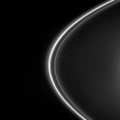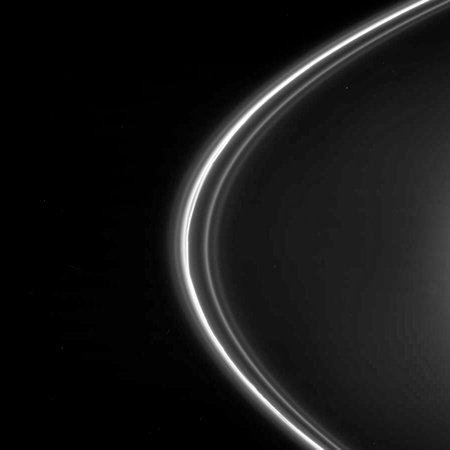Soubor:PIA07712 - F ring animation.gif
PIA07712_-_F_ring_animation.gif (450 × 450 pixelů, velikost souboru: 3,43 MB, MIME typ: image/gif, ve smyčce, 65 snímků, 26 s)
Historie souboru
Kliknutím na datum a čas se zobrazí tehdejší verze souboru.
| Datum a čas | Náhled | Rozměry | Uživatel | Komentář | |
|---|---|---|---|---|---|
| současná | 24. 11. 2007, 21:51 |  | 450 × 450 (3,43 MB) | WolfmanSF | Reduce file size by deleting alternate frames. Double delay setting to maintain speed of animation. |
| 23. 11. 2007, 11:48 |  | 450 × 450 (6,44 MB) | WolfmanSF | truncate down to 122 frames | |
| 23. 11. 2007, 04:00 |  | 450 × 450 (6,91 MB) | WolfmanSF | further truncation down to 131 frames | |
| 22. 11. 2007, 11:02 |  | 450 × 450 (7,12 MB) | WolfmanSF | ||
| 21. 11. 2007, 12:01 |  | 450 × 450 (9,01 MB) | WolfmanSF | {{Information |Description=This movie sequence from Cassini shows dark drapes in the inner strands of the F ring caused by the gravitational influence of the shepherd moon Prometheus (102 kilometers, 63 miles across). Prometheus appears first in the sequ |
Využití souboru
Tento soubor používá následující stránka:
Globální využití souboru
Tento soubor využívají následující wiki:
- Využití na af.wikipedia.org
- Využití na ar.wikipedia.org
- Využití na be.wikipedia.org
- Využití na bn.wikipedia.org
- Využití na de.wikipedia.org
- Využití na en.wikipedia.org
- Využití na eo.wikipedia.org
- Využití na fa.wikipedia.org
- Využití na fr.wikipedia.org
- Využití na gn.wikipedia.org
- Využití na hy.wikipedia.org
- Využití na id.wikipedia.org
- Využití na it.wikipedia.org
- Využití na lb.wikipedia.org
- Využití na mk.wikipedia.org
- Využití na pt.wikipedia.org
- Využití na ro.wikipedia.org
- Využití na ru.wikipedia.org
- Využití na sk.wikipedia.org
- Využití na tr.wikipedia.org
- Využití na uk.wikipedia.org
- Využití na zh-classical.wikipedia.org
- Využití na zh.wikipedia.org


